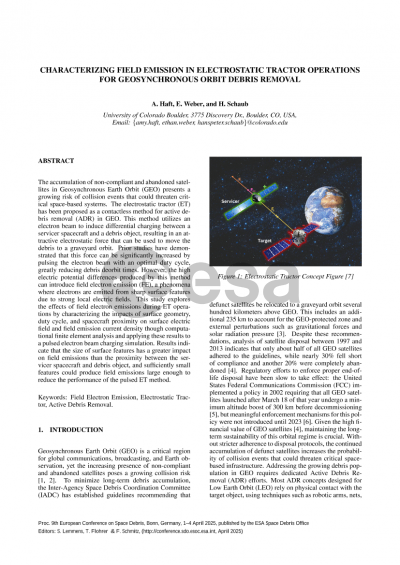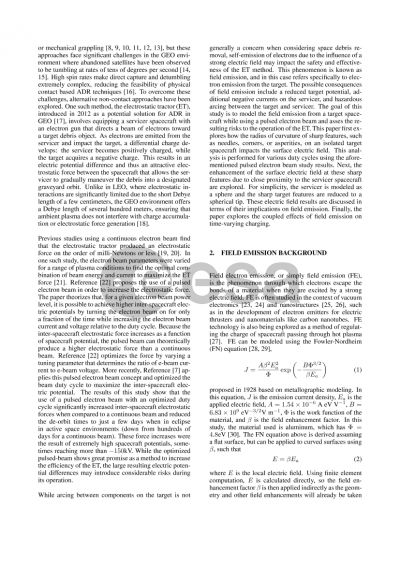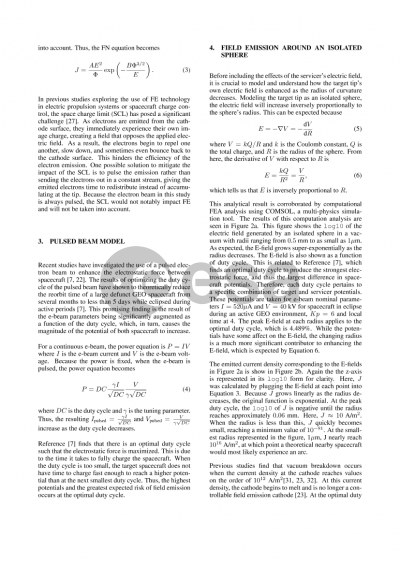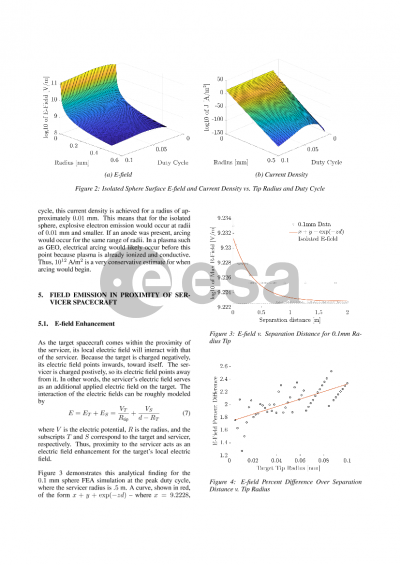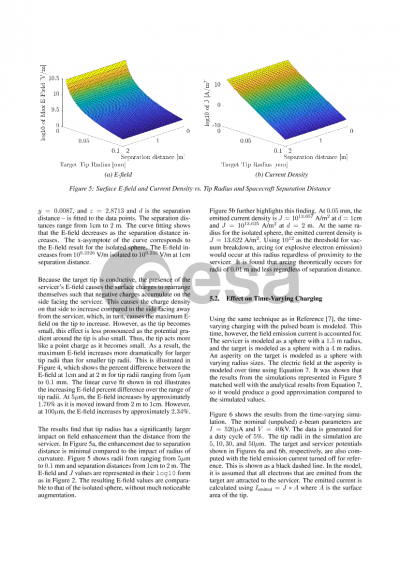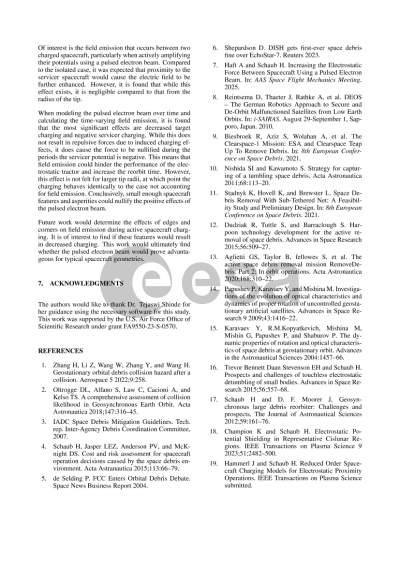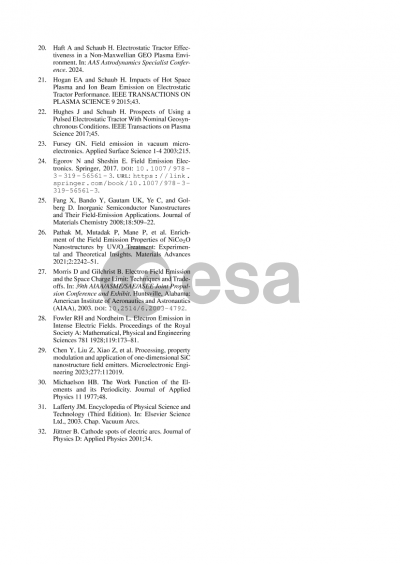Document details

Abstract
The electrostatic tractor (ET) is a promising method of active debris removal in Geosynchronous Earth Orbit (GEO). A servicing spacecraft equipped with an electron gun directs the electron beam at a target, charging it negatively, while the emission of electrons charges the servicer positively. The resulting attractive electrostatic force between the two spacecraft allows the servicer to reorbit the target into a GEO graveyard orbit. Previous research using a continuous e-beam in GEO shows electrostatic forces between spacecraft on the order of mN or less, with re-orbit times of several months. However, a 2017 study revealed that using a pulsed e-beam can increase this force and reduce the re-orbit time. Early analysis has shown that while the target is in eclipse, it can charge to potentials over -120kV when optimizing the duty cycle of the pulsed beam in an active GEO environment. While arcing on the target itself is not necessarily a concern when considering space debris, self-emission of electrons due to the influence of a strong electric field is certainly a possibility. This phenomenon is known as field emission, and in this case refers specifically to electron emission from the target. The consequences of field emission include a reduced target potential, additional negative currents on the servicer, and severe arcing between the spacecraft. The goal of this study is to find an adequate separation distance between the target and servicer such that field emission does not occur while still enhancing the electrostatic force. The assumptions made in this study are (1) there are no residual gasses in the pure vacuum of space (no outgassing) and (2) the surfaces of both spacecraft are smooth and have no imperfections that may cause local enhancements in the electric field. The study noted previously assumes spherical spacecraft, but in reality, the target will have complex geometry, including sharp corners, antennae, etc. These features are likely to self-emit, and it has been determined using the Fowler-Nordheim (FN) equation for an isolated object that field emission becomes significant for curves with radii smaller than 0.05mm. Because the emitted current density is dependent on electric field strength, it can be inferred that field emission will increase when the target is in the proximity of the servicer due to its generally large, positive electric potential. As the electrostatic force increases, so does the torque acting on the target, which causes areas of highest charge density to rotate toward the servicer. The electric field interaction between the spacecraft will be modeled in SPIS, and the self-emission over time will be demonstrated using the torques produced by the Multi-Sphere Model (MSM). The MSM represents the complex geometries and surface charge distributions of the spacecraft through a collection of spheres. Next, the various effects of self-emission will be simulated using the AVS Lab library of spacecraft charging code. The self-emitted current of electrons from the target on the servicer will be included, and the potentials of both spacecraft will be adjusted to reflect the additional current. Finally, the resulting electrostatic force between the spacecraft will be modeled in the context of re-orbit time.
Preview
